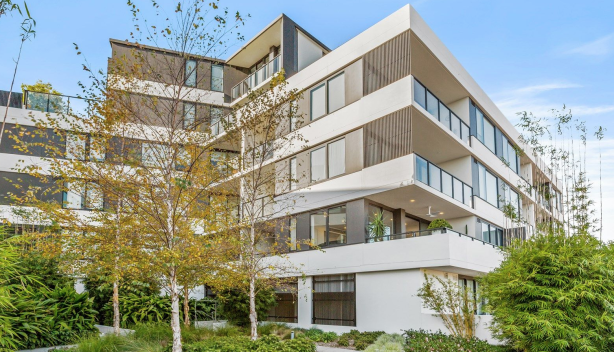Negative gearing is set to be a key issue in the upcoming federal election.
If elected, Labor intends to reform the practice with the aim of improving housing affordability. The Coalition intends to leave negative gearing as is.
But what is negative gearing, how does it work and what exactly are the changes Labor has proposed?
Story by Daniel Butkovich – Domain
What is negative gearing?
Gearing is when an investor borrows money to purchase an investment property.
Negative gearing is when the interest on the loan is higher than the net rental income, meaning the investor is making a loss.
Under current tax laws, this loss can then be deducted from other income, such as wages, reducing the investor’s taxable income in that financial year.
Positive gearing is when the interest on the loan is lower than the net rental income. Investors are liable to pay tax on this income at their marginal tax rate.
The net rental income is considered to be the rental income minus the expenses associated with owning the property, such as maintenance, management and depreciation.
Why invest in a loss-making property?
Investors buy property to make money, not lose it, and the idea behind buying a loss-making investment is that any short-term losses will be outweighed by long-term capital gains.
Many investors would also expect rental income to increase over time as the property rises in value and demand for rental properties in the area increases. This means that a negatively geared property can become positively geared once the income exceeds the interest and expenses.
An investment property purchased in an area with a low rental yield, such as an inner-city suburb, is more likely to be negatively geared, while a property purchased in an area with a high rental yield, such as a regional town, is more likely to be positively geared.
However, inner-city properties tend to rise in value more than regional areas in the long term, so investors usually expect negatively geared properties to increase in value enough to cover the loss, and then some.
What are Labor’s proposed changes to negative gearing?
If elected, Labor proposes to limit negative gearing to new housing only. This means that investors can only deduct net rental losses from newly constructed properties from their wage income.
Labor has stated that under the plan, all investments made before the changes come into effect will be fully grandfathered. This means investors who purchase existing properties before the commencement date will still be able to claim losses against wage income.
Although losses from existing properties can’t be deducted from wage income, losses can still be offset against other investment income such as share dividends, or carried forward to offset the capital gain on the property when it is sold.
This means that investors will still be able to claim losses from rental properties, but not necessarily in the financial year that the losses were incurred. However, this will make it more expensive for an investor to hold a loss-making property in the short term, as investors can expect lower cash flow when purchasing a negatively geared property.

What are Labor’s proposed changes to capital gains tax?
Labor is also proposing to halve the capital gains discount for all assets, such as property, shares and managed funds. The proposed capital gains tax changes will apply to both new and existing properties.
Currently, investors who sell an asset are liable to pay tax on the capital gain at their marginal tax rate. However, investors who hold an asset for longer than 12 months are entitled to a 50 per cent discount. This discount was introduced in 1999 under the Howard government, and means eligible investors only need to pay tax on 50 per cent of their capital gain.
Labor’s proposed change reduces the capital gains discount to 25 per cent, meaning investors will be liable to pay tax on 75 per cent of their capital gain.
Labor says its proposed capital gains tax changes will be fully grandfathered, meaning investors who purchase properties before the commencement date will be unaffected and will receive the full 50 per cent discount.
- Related: Investors to swoop on property if Labor elected
- Related: How property investors can reduce their tax bill
- Related: Off-the-plan investors benefit from depreciation changes
When would Labor’s proposed negative gearing changes come into effect?
Labor has announced that, if elected at the May election, the changes to negative gearing would come into effect on January 1, 2020. At this time the changes to capital gains tax would also come into effect.
What deductions can property investors claim?
Interest usually makes up the largest proportion of the amount property investors can claim as a deduction each year, but there are many other costs investors can deduct from their income to reduce their tax liability.
It’s important to note that investors can only deduct the interest portion of loan repayments, not the principal.
These are some of the deductions investors can claim, according to the Australian Tax Office:
- Interest expenses.
- Real estate agent fees and commission.
- Repairs and maintenance.
- Advertising for tenants.
- Body corporate fees and charges.
- Council rates and water charges.
- Land tax.
- Cleaning and pest control.
- Gardening and lawn mowing.
- Building, contents and public liability insurance.
- Some legal expenses.
- Depreciation of new plant and equipment.

One cost in particular can mean the difference between a property being positively or negatively geared, but doesn’t actually require investors to be out of pocket.
The capital works allowance lets investors claim 2.5 per cent of the construction costs of the building each year if the property was built after 1985, and 2.5 per cent of alteration costs – such as a bathroom or kitchen renovation – if the works commenced after 1992.
Investors can claim a capital works allowance even if the works were completed before they purchased the property. This can allow investors to claim several thousands of dollars in deductions without actually being out of pocket.
The logic behind the capital works allowance is that the value of the building and alterations diminishes over time through wear and tear, so this reduction is value is considered a loss.
It’s important to note that capital works expenses form part of the cost base of a property for capital gains purposes, and deductions need to be factored in when calculating capital gains tax liability when selling a property.
The article has been updated since publication following Labor’s announcement of a January 1 commencement date for their negative gearing and capital gains tax changes.



